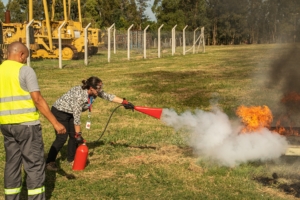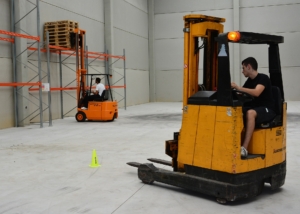America will continue to be a global economic leader only if the country maintains a skilled and trained future workforce. That critical component could cease to exist without continual monitoring and ongoing training initiatives. Fortunately, public officials at every level of government are committed to maintaining the country’s global status and they are working to ensure America’s workforce is filled with skilled innovators, technicians, creators and leaders.
As a testament to the government’s commitment to adequately train tomorrow’s workers, new facilities and programs are about to be launched throughout the country. In the first year of the pandemic, Congress authorized $280 billion to support new workforce training initiatives, including all new training centers. That volume of recent funding was allocated to the US Department of Education and represents a four-fold increase in the agency’s annual budget. The remaining funds continue to launch new projects.
The US Department of Labor (DOL) offers support for workforce development through the Workforce Innovation and Opportunity Act (WIOA). The agency sends funding directly to each state’s workforce agency and then much of it is allocated to local entities. The disbursement of grant funding is available for technology-enhanced training for jobs related to healthcare, logistics, information technology, manufacturing and other industry categories.
 Additional funding for training is available through the federal Economic Development Administration (EDA). The U.S. Department of Transportation (DOT) also has funding for workforce training in industries related to transportation. Recent changes in DOT training programs amount to a potential availability of $50 billion per year.
Additional funding for training is available through the federal Economic Development Administration (EDA). The U.S. Department of Transportation (DOT) also has funding for workforce training in industries related to transportation. Recent changes in DOT training programs amount to a potential availability of $50 billion per year.
The U.S. Department of Health and Human Services (HHS) authorizes hundreds of millions in annual funding for services to alleviate the causes and conditions of poverty through vocational training as well. The Community Services Block Grant (CSBG) program is still awarding $755 million from the 2022 funding cycle and 2023 funding will be available soon.
Examples of how this massive amount of funding is being deployed throughout the country follow. Every state has options to contribute to workforce training in ways that will benefit employers in the region and most supplement the federal funding with state allocations as well.
City officials in Round Rock, Texas, will ask voters to support a $44 million bond measure in May. The bond package has funding for parks, recreation and public safety. However, the bond package primarily focuses on funding for the proposed expansion of a public safety training center. Plans are in place to expand the training facility by constructing new classrooms, a high-speed driving track and enhancing several components of the building’s original design.
The University of Michigan will develop a research and education center to foster newer, industry-driven skill sets. A 200,000-square-foot facility will be constructed in the city of Detroit. The four-acre construction site was previously donated to the university by a private development company and Michigan state lawmakers are allocating $100 million in state tax dollars to the project. Overall, the effort is expected to cost approximately $250 million.
An agricultural training center at Chico State’s College of Agriculture in California has been granted $19 million in state funding. It will be part of the College of Agriculture on the University Farm campus which was created to advance experiential learning and agricultural training. The scope of work will include pre-construction services, design and construction of a 10,000-square-foot training facility.
A Quick Start Training Center expansion project in Pooler, Ga., has received $11 million in state funding. Georgia’s principal economic development agency will expand an existing workforce training facility and the project is scoped to ensure resources align with new and expanding businesses in the region. The effort will culminate in a standalone facility with modernized classrooms, technical labs, high-bay space, administrative offices, meeting space and a loading dock—all of which will support training for advanced EV manufacturing jobs.
 New funding with a baseline of $5 million has been allocated for the design and planning of a workforce training center in Arizona. The project will include classrooms, educational resources, industrial equipment, site development and other ancillary assets required to bolster regionally defined training programs. Once the Arizona Commerce Authority (ACA) has completed that initial training center, its design will be used to modulate construction of other training centers throughout the state.
New funding with a baseline of $5 million has been allocated for the design and planning of a workforce training center in Arizona. The project will include classrooms, educational resources, industrial equipment, site development and other ancillary assets required to bolster regionally defined training programs. Once the Arizona Commerce Authority (ACA) has completed that initial training center, its design will be used to modulate construction of other training centers throughout the state.
Another planning and design effort for a project in Midland, Texas has been announced. A $2.5 million grant is available for the first phase after voters in the west Texas city voted to begin an initiative for a combined training facility to support both the police and fire departments. The new facility will be constructed near other existing training facilities and will include a tactical building with a fitness area with locker rooms. An administrative section will include classroom space, office space, workstations for fire/police department training, a kitchen, breakroom, a wet lab and an auditorium.
_____________________________________________________________________________________________________________________________
 Mary Scott Nabers is President/CEO of Strategic Partnerships, Inc. (SPI), a full-service business development firm specializing in procurement consulting, government affairs, research and public-private partnerships (P3s). A former statewide office holder in Texas, Mary founded Strategic Partnerships, Inc after leaving government and later was the co-founder of the Gemini Global Group .
Mary Scott Nabers is President/CEO of Strategic Partnerships, Inc. (SPI), a full-service business development firm specializing in procurement consulting, government affairs, research and public-private partnerships (P3s). A former statewide office holder in Texas, Mary founded Strategic Partnerships, Inc after leaving government and later was the co-founder of the Gemini Global Group .
Mary is a recognized expert in public private partnerships and the author of Collaboration Nation – How Public-Private Ventures Are Revolutionizing the Business of Government and her most recent book Inside the Infrastructure Revolution – A Roadmap for Rebuilding America. She was selected to membership in Icons of Infrastructure and is a regular speaker at industry conferences throughout the country. She writes for a number of national publications and blogs on a weekly basis.
Mary holds an MBA degree from The University of Texas.
For more information – www.spartnerships.com and www.maryscottnabers.com






 RSS Feed
RSS Feed